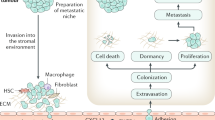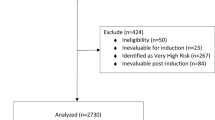Abstract
Skeletal-related events (SREs) are common in patients with osteolytic lesions from multiple myeloma (MM), and result in substantial morbidity. We report herein a comprehensive, retrospective, multivariate analysis of prognostic factors for survival and first on-study SRE in MM patients using data from the phase III, randomized study comparing zoledronic acid with pamidronate in MM or breast cancer. Cox regression analyses were used to assess 22 variables for prognostic significance (defined as associations with P<0.05) in patients with bone metabolism marker assessments and complete baseline variable data. Of 510 evaluable MM patients, 282 had complete covariate information and were included in models. Reduced Cox multivariate models identified five significant prognostic factors for first SRE (weight, race, high N-terminal cross-linked telopeptide of type I collagen (NTX), high pain score, and need for narcotic analgesics) and seven for survival (age, SRE history, myeloma subtype, anemia, high lactate dehydrogenase, high NTX, and low albumin levels). High NTX was the only variable associated with elevated risks of both first SRE and death (P⩽0.02 for each). These analyses identified prognostic factors for SREs and survival in patients with MM. Taken together with current staging systems, these factors could further facilitate decision making for optimal treatment of myeloma bone disease, although further prospective assessments are needed.
This is a preview of subscription content, access via your institution
Access options
Subscribe to this journal
Receive 12 print issues and online access
$259.00 per year
only $21.58 per issue
Buy this article
- Purchase on Springer Link
- Instant access to full article PDF
Prices may be subject to local taxes which are calculated during checkout


Similar content being viewed by others
References
Coleman RE . Metastatic bone disease: clinical features, pathophysiology and treatment strategies. Cancer Treat Rev 2001; 27: 165–176.
Greipp PR, San Miguel J, Durie BGM, Crowley JJ, Barlogie B, Blade J et al. International staging system for multiple myeloma. J Clin Oncol 2005; 23: 3412–3420.
Durie BG, Salmon SE . A clinical staging system for multiple myeloma. Correlation of measured myeloma cell mass with presenting clinical features, response to treatment, and survival. Cancer 1975; 36: 842–854.
Terpos E, Katodritou E, Tsiftsakis E, Kastritis E, Christoulas D, Pouli A et al. Cystatin-C is an independent prognostic factor for survival in multiple myeloma and is reduced by bortezomib administration. Haematologica 2009; 94: 372–379.
Abildgaard N, Brixen K, Kristensen JE, Eriksen EF, Nielsen JL, Heickendorff L . Comparison of five biochemical markers of bone resorption in multiple myeloma: elevated pre-treatment levels of S-ICTP and U-Ntx are predictive for early progression of the bone disease during standard chemotherapy. Br J Haematol 2003; 120: 235–242.
Lipton A, Cook RJ, Coleman RE, Smith MR, Major P, Terpos E et al. Clinical utility of biochemical markers of bone metabolism for improving the management of patients with advanced multiple myeloma. Clin Lymphoma Myeloma 2007; 7: 346–353.
Terpos E, Szydlo R, Apperley JF, Hatjiharissi E, Politou M, Meletis J et al. Soluble receptor activator of nuclear factor kappaB ligand-osteoprotegerin ratio predicts survival in multiple myeloma: proposal for a novel prognostic index. Blood 2003; 102: 1064–1069.
Brown JE, Cook RJ, Major P, Lipton A, Saad F, Smith M et al. Bone turnover markers as predictors of skeletal complications in prostate cancer, lung cancer, and other solid tumors. J Natl Cancer Inst 2005; 97: 59–69.
Saad F, Chen Y, Hei Y . Fractures negatively impact survival in patients with multiple myeloma or bone metastases from solid tumors. Eur J Cancer Suppl 2005; 3: 364 (abstract 1265).
Saad F, Lipton A, Cook R, Chen YM, Smith M, Coleman R . Pathologic fractures correlate with reduced survival in patients with malignant bone disease. Cancer 2007; 110: 1860–1867.
Kyle RA, Yee GC, Somerfield MR, Flynn PJ, Halabi S, Jagannath S et al. American Society of Clinical Oncology 2007 clinical practice guideline update on the role of bisphosphonates in multiple myeloma. J Clin Oncol 2007; 25: 2464–2472.
Coleman RE, Major P, Lipton A, Brown JE, Lee KA, Smith M et al. Predictive value of bone resorption and formation markers in cancer patients with bone metastases receiving the bisphosphonate zoledronic acid. J Clin Oncol 2005; 23: 4925–4935.
Hirsh V, Major PP, Lipton A, Cook RJ, Langer CJ, Smith MR et al. Zoledronic acid and survival in patients with metastatic bone disease from lung cancer and elevated markers of osteoclast activity. J Thorac Oncol 2008; 3: 228–236.
Rosen LS, Gordon D, Kaminski M, Howell A, Belch A, Mackey J et al. Zoledronic acid versus pamidronate in the treatment of skeletal metastases in patients with breast cancer or osteolytic lesions of multiple myeloma: a phase III, double-blind, comparative trial. Cancer J 2001; 7: 377–387.
Rosen LS, Gordon D, Tchekmedyian NS, Yanagihara R, Hirsh V, Krzakowski M et al. Long-term efficacy and safety of zoledronic acid in the treatment of skeletal metastases in patients with nonsmall cell lung carcinoma and other solid tumors: a randomized, phase III, double-blind, placebo-controlled trial. Cancer 2004; 100: 2613–2621.
Rosen LS, Gordon D, Kaminski M, Howell A, Belch A, Mackey J et al. Long-term efficacy and safety of zoledronic acid compared with pamidronate disodium in the treatment of skeletal complications in patients with advanced multiple myeloma or breast carcinoma: a randomized, double-blind, multicenter, comparative trial. Cancer 2003; 98: 1735–1744.
Lipton A, Cook R, Saad F, Major P, Garnero P, Terpos E et al. Normalization of bone markers is associated with improved survival in patients with bone metastases from solid tumors and elevated bone resorption receiving zoledronic acid. Cancer 2008; 113: 193–201.
Lipton A, Cook RJ, Major P, Smith MR, Coleman RE . Zoledronic acid and survival in breast cancer patients with bone metastases and elevated markers of osteoclast activity. Oncologist 2007; 12: 1035–1043.
Gnant M, Mlineritsch B, Schippinger W, Luschin-Ebengreuth G, Postlberger S, Menzel C et al. Endocrine therapy plus zoledronic acid in premenopausal breast cancer. N Engl J Med 2009; 360: 679–691.
Abildgaard N, Brixen K, Eriksen EF, Kristensen JE, Nielsen JL, Heickendorff L . Sequential analysis of biochemical markers of bone resorption and bone densitometry in multiple myeloma. Haematologica 2004; 89: 567–577.
Jakob C, Sterz J, Liebisch P, Mieth M, Rademacher J, Goerke A et al. Incorporation of the bone marker carboxy-terminal telopeptide of type-1 collagen improves prognostic information of the international staging system in newly diagnosed symptomatic multiple myeloma. Leukemia 2008; 22: 1767–1772.
Berenson JR, Yellin O, Crowley J, Makary A, Gravenor DS, Yang HH et al. Overall survival among patients with multiple myeloma (MM) treated with zoledronic acid (ZOL). Clin Lymphoma Myeloma 2009; 9 (Suppl 1): S12–S13 (abstract A088).
Acknowledgements
Funding for medical editorial assistance was provided by Novartis Pharmaceuticals Corporation, East Hanover, New Jersey. We thank Dr Shalini Murthy for her medical editorial assistance with this paper.
Author information
Authors and Affiliations
Corresponding author
Ethics declarations
Competing interests
Evangelos Terpos has received honoraria and research funding from Novartis and Janssen-Cilag. James Berenson has received honoraria and consulting fees from Novartis and has earlier given expert testimony on their behalf. Richard Cook has received honoraria and consulting fees from Abbott, Amgen, GlaxoSmithKline, and Novartis. Allan Lipton has participated as a consultant for Amgen, Novartis, Merck, Monogram, and GlaxoSmithKline; received honoraria from Amgen, Pfizer, and Novartis; and received research funding from Novartis, Monogram Biosciences, and Oncogene Sciences. Robert Coleman has received honoraria and consulting fees from Novartis and has earlier given expert testimony on their behalf.
Rights and permissions
About this article
Cite this article
Terpos, E., Berenson, J., Cook, R. et al. Prognostic variables for survival and skeletal complications in patients with multiple myeloma osteolytic bone disease. Leukemia 24, 1043–1049 (2010). https://doi.org/10.1038/leu.2010.62
Received:
Revised:
Accepted:
Published:
Issue Date:
DOI: https://doi.org/10.1038/leu.2010.62
Keywords
This article is cited by
-
Circulating cytokines present in multiple myeloma patients inhibit the osteoblastic differentiation of adipose stem cells
Leukemia (2022)
-
Whole-body magnetic resonance imaging (WBMRI) versus whole-body computed tomography (WBCT) for myeloma imaging and staging
Skeletal Radiology (2022)
-
Bone complications in patients with multiple myeloma in five European countries: a retrospective patient chart review
BMC Cancer (2020)
-
Pathogenesis of bone disease in multiple myeloma: from bench to bedside
Blood Cancer Journal (2018)
-
Relationship between circulating syndecan-1 levels (CD138s) and serum free light chains in monoclonal gammopathies
Journal of Experimental & Clinical Cancer Research (2015)



